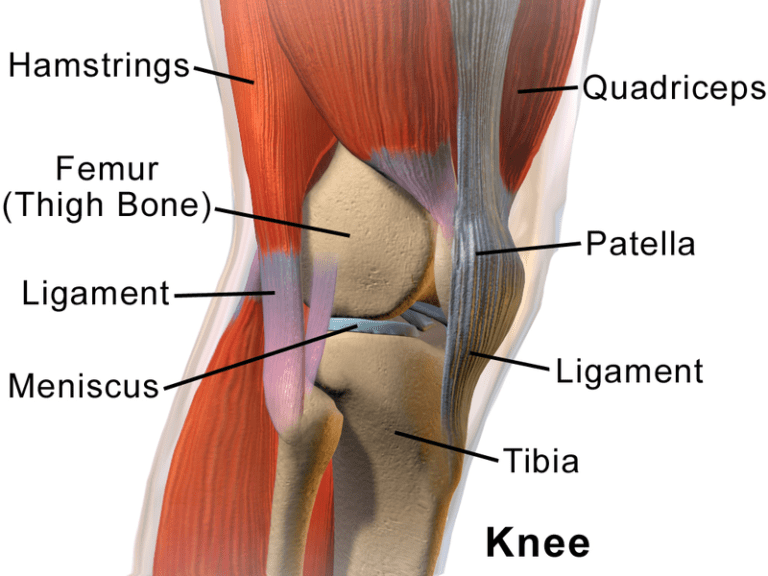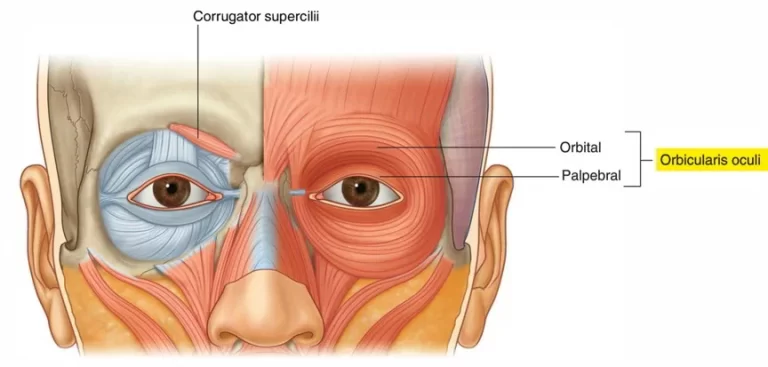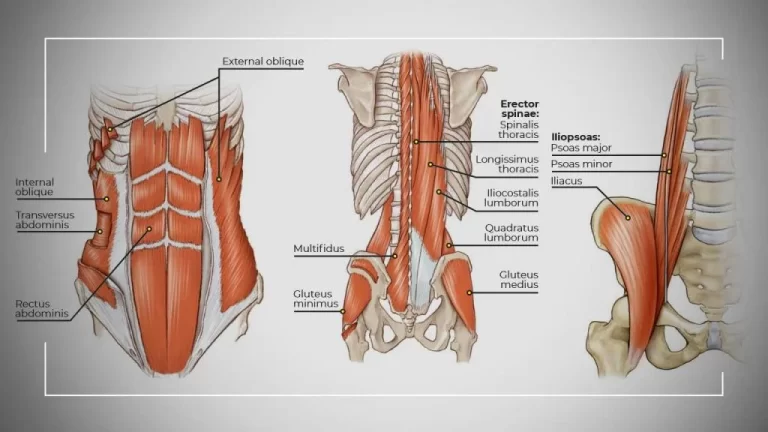Erector Spinae Muscle
Table of Contents
Introduction
The erector spinae (ES) muscles are large muscles, and the superficial muscles lie just deeply into the thoracolumbar fascia and it originates from the erector spinae aponeurosis (ESA). The proximal part extension on the sacrum bone, the spinous processes of the lumbar vertebrae body, and the erector spinae aponeurosis are all locations where the erector spinae aponeurosis is located. These muscles run the whole length of the back, from the base of the skull to the pelvis bone.
The erector spinae muscles are formed of three muscles group, with its fibers running additional or/and less vertically throughout the lumbar, thoracic, and cervical areas. It lies in the groove on the flank of the vertebral column. Its muscle group is inadequately differentiated but separates into three sections in the upper lumbar area named:
- Iliocostalis, most lateral
- Longissimus, the intermediate column
- Spinalis, most media
The ES relationships are surrounded by the thoracolumbar fascia, serratus posterior inferior muscle, rhomboid muscle, and splenii muscle groups. Between the posterior layer and middle layers of the thoracolumbar fascia in the lumbar regions. The erector spinae muscle is also one of the core muscles and one of the paraspinal muscles.
Spinalis
Is the considerable medial part just next to the spine. It attaches to the spinous process of the adjacent vertebrae. It is divided into 3 parts: Spinalis capitis; Spinalis cervicis; Spinalis thoracic.
Longissimus
It originates in the middle portion of the erector spinae muscles, lateral to the spinal. The longissimus muscles create the main core of the erector group. It connects along the transverse process of the vertebrae. It is divided into 3 portions: Longissimus capitis; Longissimus cervicis; Longissimus thoracic.
Iliocostalis
The Iliocostalis muscle is the considerable lateral portion of the erector spinae muscles. It also attaches to the ribs. Due to the lateral arrangement, tightness in the iliocostalis muscles can move the ipsilateral hip into a superior position, or bring the ribcage inferior toward the hip.
The function of the spinal erector muscles is to move the vertebral column. Iliocostalis muscle contraction that is bilateral extends to the spine, whereas muscle contraction that is unilateral results in lateral flexion (ipsilateral) movement. They support maintaining posture by steadying the spine on the pelvis during the walking period.
Origin and insertion
Spinalis muscles
The spinal muscles are the numerous medial erector spinae muscles. They are separated into three provincial groups, from superior to inferior:
Spinalis capitis muscle originates from the spinous processes of C7-T1 vertebrae and is inserted into the midline of the occipital bone.
Spinalis colli muscle originates from the exact points as spinalis capitis, but also from the nuchal ligament. It inserts into the spinous processes of C2-C4 vertebrae.
Spinalis thoracic muscles are extended from the spinous process of T11 to L2 to vertebrae until also the spinous process of T2 to T8 vertebrae process.
Longissimus muscles
The longissimus muscles are the muscles of the mid-erector spinae muscles. They are even the thickest and the longest. The longissimus muscles are divided into three regional groups, equal to the spinalis muscles. These include, from superior to inferior:
The transverse processes of the vertebrae from C4 to T5 are the source of the longissimus capitis muscles, which insert at the mastoid process of the temporal bone.
Longissimus colli muscles are expanded between the transverse processes of vertebrae from T1-T5 and transverse processes of vertebrae C2-C6.
The Longissimus thoracis muscle consists of thoracic and lumbar portions. The thoracic portion transits from the L1-L5 vertebrae, sacrum, and posterior iliac crest until the thoracic vertebrae and inferior six ribs. The lumbar portion extends between the region shrouding the anteromedial aspect of the ilium and L1-L5 vertebrae.
Iliocostalis muscles
The iliocostalis muscles are the considerable lateral erector spinae muscles. According to their attachments and also location, they are regionally separated into three different groups, from superior to inferior:
Iliocostalis colli muscles arise from the angle of ribs 3 to 6 and are also insertion into the transverse processes of vertebrae C4-C6.
Iliocostalis thoracis muscles originate from the angles of ribs 7-12 and attach to the angles of ribs 1-6 and also the transverse process of the vertebra at C7.
The lateral crest of the sacrum, the medial end of the iliac crest bone, and the thoracolumbar fascia are where the iliaocostalis lumborum muscles originate. It connects to the angle of ribs 5-12, transverse processes of vertebrae L1-L4, and connecting thoracolumbar fascia.
Nerve supply
The spinalis muscles are supplied by the lateral branches of the posterior rami of the cervical, thoracic, and also lumbar spinal nerves. The longissimus muscles have an equivalent innervation to the spinalis muscles; from the lateral branches of the posterior rami of the adjoining spinal nerves. Equivalent to the additional erector spinae groups muscle, iliocostalis muscles are innervated by the lateral branches of the posterior rami of the cervical, thoracic, and also at lumbar spinal nerves.
Blood supply
The blood supply to the spinalis muscles arrives from different branches the vertebral, deep cervical, occipital artery, intercostal, and also at lumbar arteries. The longissimus muscles acquire arterial blood from branches of the vertebral, deep cervical, occipital, transverse cervical, intercostal, and sacral arteries. Arterial branch supply is through different branches of the occipital, deep cervical, vertebral, posterior intercostal, subcostal, lumbar artery, and also at lateral sacral arteries.
Erector Spinae Action
The erector spinae muscles group consists of mainly three portions which comprise the spinalis muscle, longissimus muscle, and also iliocostalis muscles. Additionally, each of these three parts of the erector spinae consists of three muscles of their own. Therefore, there are nine total muscles in the erector spinae muscle group which contain iliocostalis cervicis, iliocostalis thoracis, iliocostalis lumborum, spinalis capitis, spinalis cervicis, spinalis thoracis, longissimus capitis, longissimus cervicis, and longissimus thoracis.

Spinalis, longissimus, and iliocostalis muscles action: The erector spinae function primarily to produce the motion of back extension and lateral back flexion. The action of the spinal muscles is to extend the spine and also laterally flex the cervical area and thoracic areas of the spine. The function of the longissimus muscles is to extend and also laterally flex (ipsilateral) the spine. Longissimus capitis also assists to rotate the head ipsilaterally. The role of the iliocostalis muscles is to extend and also laterally flexion (ipsilateral) the spine.
Clinical relations
Back pain is an extremely common problem. It is one of the leading reasons why people visit their doctors and the second considerable common cause of people missing work, only after headaches. Localized lower back pain is usually muscular, associated with spasming of the muscle as a consequence of guarding, or contraction of the muscles in anticipation of pain.
Everyday causes of back pain are sprains and also strains. The lower back muscles are a common reason for low back pain. This entity is often misdiagnosed and affects millions of people of all ages and gender. Patients usually undergo exhaustive workups, including an MRI, also unwarranted.
Strains consist of a phase of tearing or stretching of the muscle fibers. Erector spinae muscles are multiple commonly affected by back strains. Back strains are usually the consequence of an inaccurate balancing of a burden on the vertebral column, placing strain on the muscles. Using the back as a lever when raising objects places enormous strain on the back muscle, which is why lifting should usually be focused on the knees. The muscles spasm as a protective mechanism behind injury.
Spasms are involuntary contractions of muscles that suggest cramps, pain, and decreased function. Acceptable warm-up and stretching, as well as exercises to improve the muscle tone of the back muscles, such as erector spinae muscles, are the main mechanisms for controlling back strains and also the backache by stabilizing the vertebral column.
Treatment
Erector Spinae Muscles Flexion-Relaxtion Phenomenon: The flexion-relaxation phenomenon is explained as the silencing of the erector spinae muscle myoelectric activity during whole trunk flexion.
In healthy someone with no low back pain, the erector spinae muscles rest in a range from the upright placement to full-lumbar flexion, due to the deep back muscles (multifidus) acting to stabilize the lumbar spine.

In individuals with low back pain, the erector spinae flexion-relaxation phenomenon is missing. The erector spinae muscles function to stabilize the lumbar spine due to the laxity of the passive collections and transformations in the neuromuscular activation pattern.
Lumbar stabilization exercises can repair the erector spinae flexion-relaxation phenomenon by strengthening the multifidus muscle.
Myofascial release of the erector spinae muscles in patients with nonspecific chronic low back pain regularized the flexion-relaxation response and decreased low back pain arck. Exercises play an important role.
Underneath are examples of activities by which the erector spinae muscle can be strengthened for therapeutic or/and also athletic goals. Additionally, exercises of the glutes may also be useful to lower back health. Care should be taken to avoid damage to the lower back when targeting spinal erectors instantly. Exercises contain, but are not restricted to: exercises are Bent-over row exercise, then Deadlift, Hyperextension action, Good-morning pose, Pull-up exercise, Rowing, Squatting, Utkatasan pose, Bridge exercise, and also Plank.

FAQs
There are nine total muscles of the erector spinae muscle. These nine muscles include the longissimus capitis, longissimus cervicis, and longissimus thoracis in addition to the iliocostalis cervicis, iliocostalis thoracis, and iliocostalis lumborum.
The erector spinae muscles have a single point, and also a common insertion point of a large broad tendon on the back of the sacrum bone, the internal side of the iliac crest, at sacroiliac ligaments, and also lumbosacral spinous processes.
The two actions of the erector spinae group are to extend and laterally flex the back. The back extension applies by bending the back backward such as when a person is doing a back bend. Lateral flexion of the back happens when a person bends their back to the side such as when a person bends slightly to the left to stretch their right side.
The name, erector spinae, refers to the process of these muscles. They are a powerful group of muscles. And, their job is an essential one, to keep the spine erect, or upright. So, the term erector then refers to erect, or/and upright.
The Erector Spinae muscles, one of our core muscles, which drive along the spine, play an important function in maintaining the stability and posture of the back. They assist to keep the spine in a neutral position and discourage excessive flexion or extension.








11 Comments